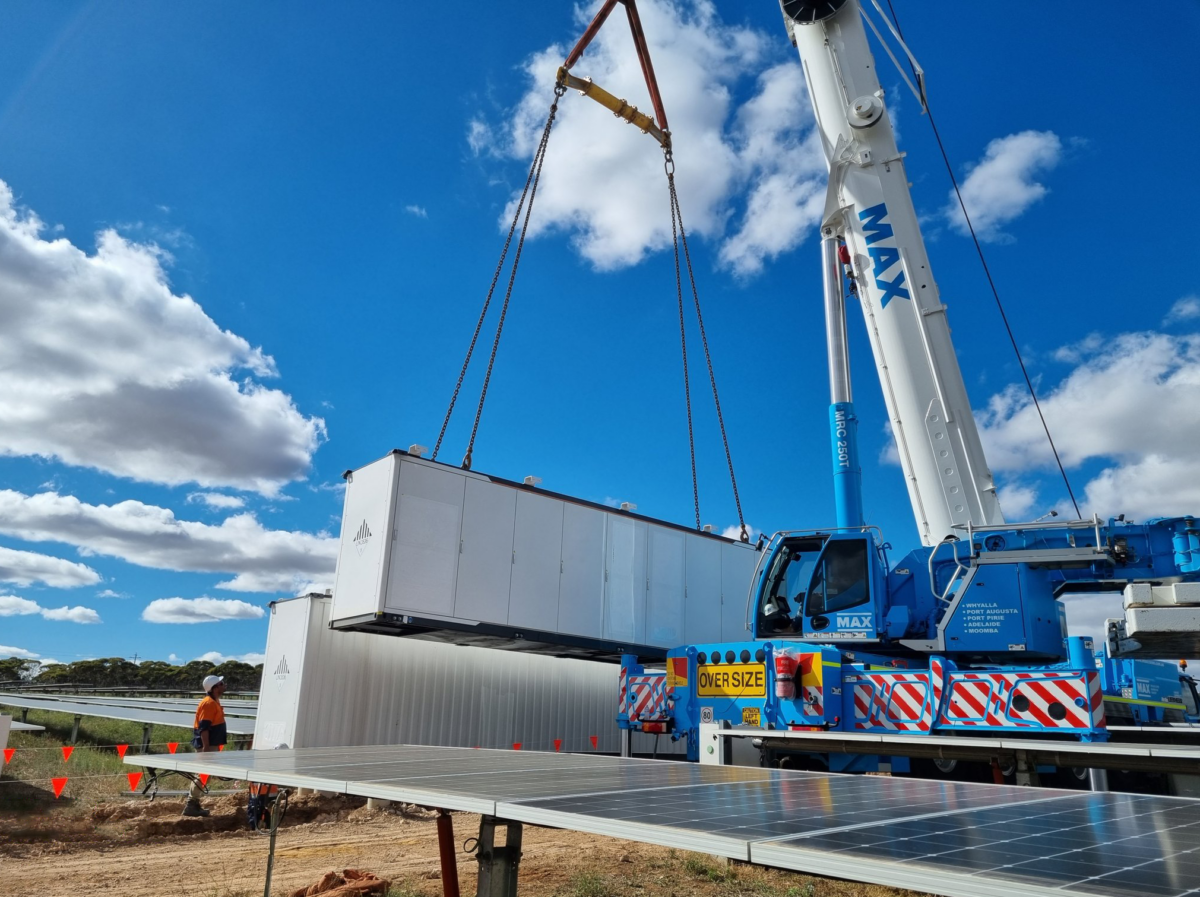A relatively unknown developer ACEnergy is joining the influx of companies developing community or, more accurately, neighbourhood batteries. Its initial 50MW/100MWh distribution battery portfolio is currently undergoing planning studies, with 10 batteries in the “advanced stage” of development, and a further 10 units in early stages.
The company is also engaging network companies in an effort to reform connection processes on the medium voltage distribution network to which the portfolio will be connected. “The assessment criteria currently focus on battery charge demand occurring during times of network peak demand, which is highly unlikely to happen in practice, as batteries will typically charge when demand is low but generation is high,” the company said.
ACEnergy is not the first to point out battery technology can reduce the need for grid augmentation by offering network support as well as providing greater capacity for the flow of rooftop solar energy.
The company is preparing to apply for upcoming rounds of the Australian Renewable Energy Agency’s (ARENA) community battery funding. Under the program, ARENA has been allocated $171 million (USD 113 million) to deliver at least 342 neighbourhood batteries across Australia. The scheme has driven a surge in interest in the battery segment, with many companies announcing funded ‘community’ batteries in the last weeks.
ACEnergy told pv magazine Australia it has picked locations in Victoria and New South Wales where its batteries can “work in concert with local grid demand,” reducing network stresses and ultimately increasing network capacity.
It says it is providing networks with copies of its internal modelling, demonstrating storage’s capability to operate in response to grid needs, thus not adding to peaks. “We are also collaborating with network companies to integrate the BESS [battery energy storage systems] with smart control systems such as operating envelopes, which once implemented, would provide networks with a degree of control over the BESS,” the company said.
ACEnergy is also hoping to inspire reforms around the tariff structure regarding charge and discharge periods for batteries. Distribution networks have recently introduced trial tariffs to incentivise distributed batteries to operate as “solar sponges” by charging during peak solar periods and discharging during evening peaks, according to the company. “However, these tariffs limit storage operations outside these specified times, discouraging charging during overnight off-peak periods for discharge within the morning peaks.”
“This limitation reduces the ability of storage systems to access a second daily cycle and prevents BESSs playing a more active role in the grid by reducing the magnitude of morning peak demand periods, and in turn lowering wholesale prices and pressure on network assets.”
Even though most power overnight comes from thermal generation at the moment, the company says such reforms would ultimately help decarbonisation as the availability of storage during morning peaks would lessen demand on network assets, enabling electrification and reducing wholesale prices.
“By failing to enable the flattening of the morning peak, networks would be increasing reliance on fossil fuels to supply the morning peak,” it added, noting that as more wind farms connect to the network, the availability to renewable energy at night should increase.
This content is protected by copyright and may not be reused. If you want to cooperate with us and would like to reuse some of our content, please contact: editors@pv-magazine.com.









By submitting this form you agree to pv magazine using your data for the purposes of publishing your comment.
Your personal data will only be disclosed or otherwise transmitted to third parties for the purposes of spam filtering or if this is necessary for technical maintenance of the website. Any other transfer to third parties will not take place unless this is justified on the basis of applicable data protection regulations or if pv magazine is legally obliged to do so.
You may revoke this consent at any time with effect for the future, in which case your personal data will be deleted immediately. Otherwise, your data will be deleted if pv magazine has processed your request or the purpose of data storage is fulfilled.
Further information on data privacy can be found in our Data Protection Policy.